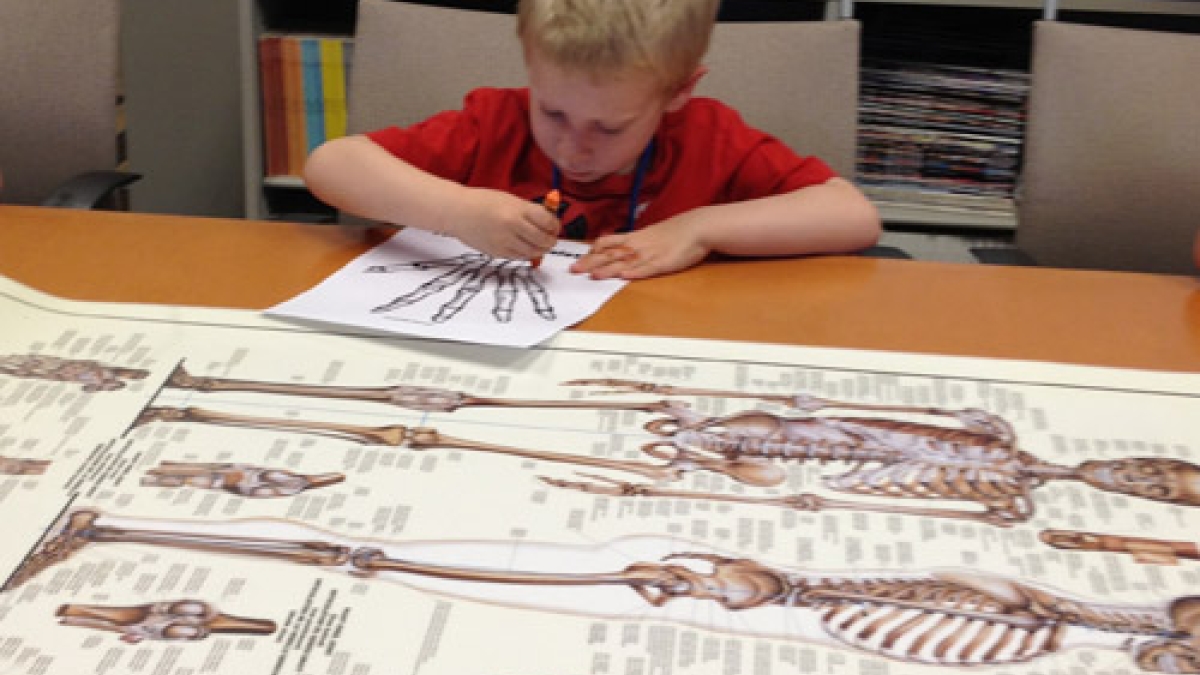ASU bioarchaeologist introduces preschoolers to science, lab work

One of the perks of attending Arizona State University’s Child Development Laboratory (CDL) is its location on the Tempe campus. This allows for some unique hands-on learning experiences for its young students, ages two through five.
Earlier this month, 19 CDL preschoolers spent time exploring the world of science in the School of Human Evolution and Social Change’s Archaeological Chemistry Laboratory.
The lab is affiliated with the Center for Bioarchaeological Research in the College of Liberal Arts and Sciences. It uses techniques from chemistry and geology to address archaeological and biological questions involving such topics as human migration, diet and social organization through the millennia.
“In general, we talked to the kids about what scientists do and different kinds of scientists,” says laboratory director and bioarchaeologist Kelly Knudson. “They had a great time learning about bones and science and are excited to do science at home with materials we provided.”
The children enjoyed two different activity stations.
In the Center for Bioarchaeological Research’s conference room, they listened to a book reading about skeletons and had the opportunity to touch various bones from a dog and a cow. They also colored illustrations of the bones of the human hand.
In the Archaeological Chemistry Laboratory, the children donned lab coats and safety glasses and learned about safety gear before mixing food coloring and water in centrifuge tubes. They labeled their test tubes and were able to take them home to use for more experiments.
Knudson was assisted by graduate students Katelyn Bolhofner and Emily Schach, who are in the bioarchaeology track of ASU’s doctoral anthropology program.
“It was a privilege to introduce such young kids to science and archaeology, and the preschoolers were so thrilled to see a laboratory and be scientists,” Knudson said. “I hope this kind of experience helps them to see how exciting science can be.”